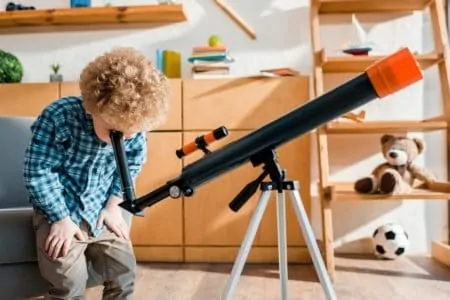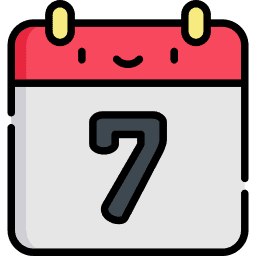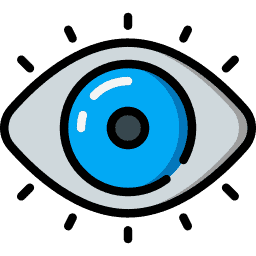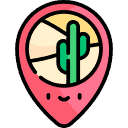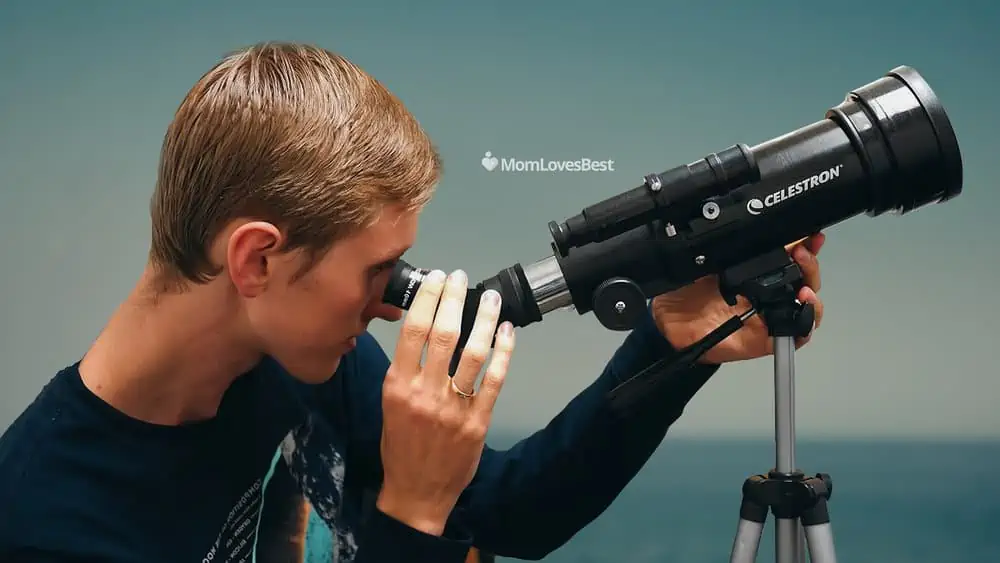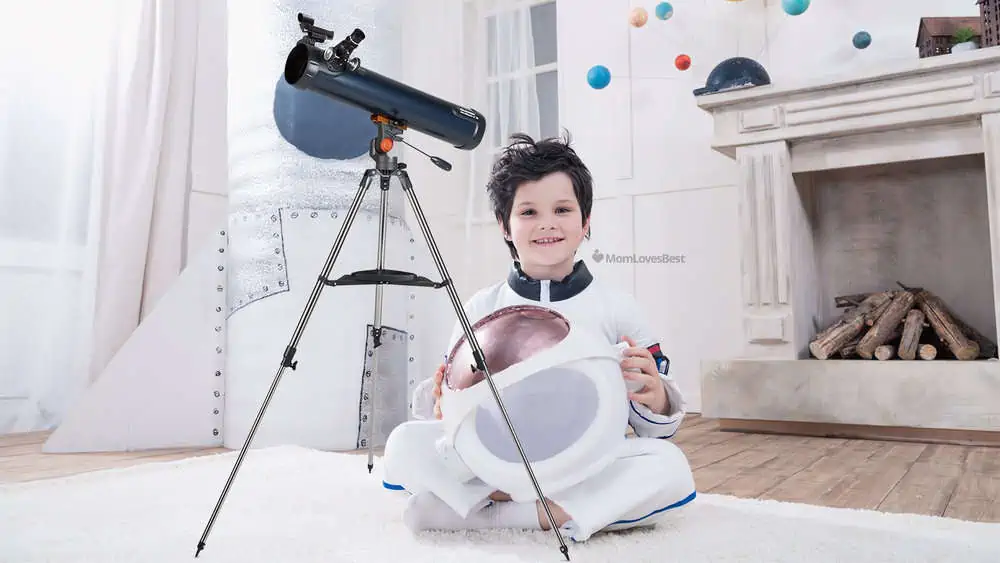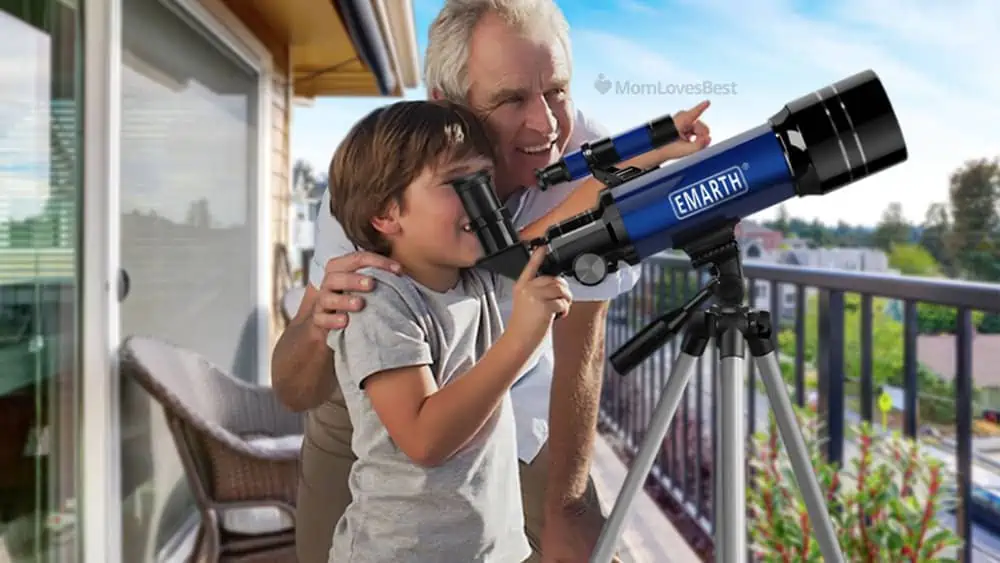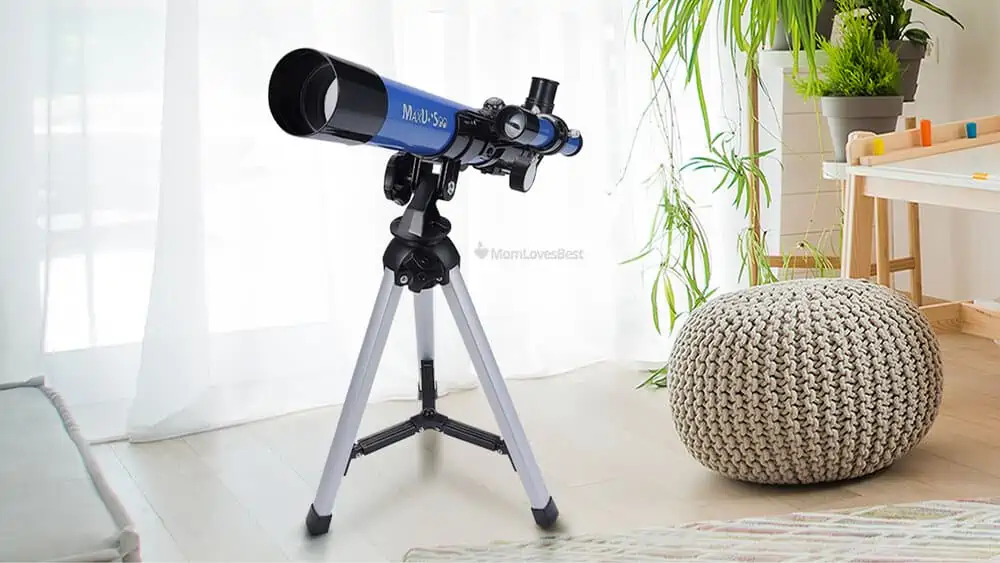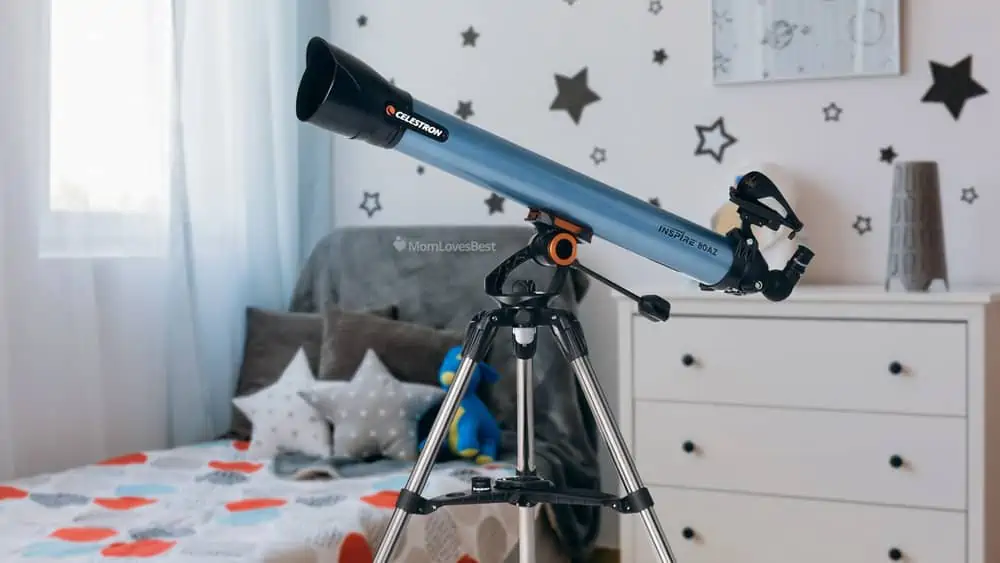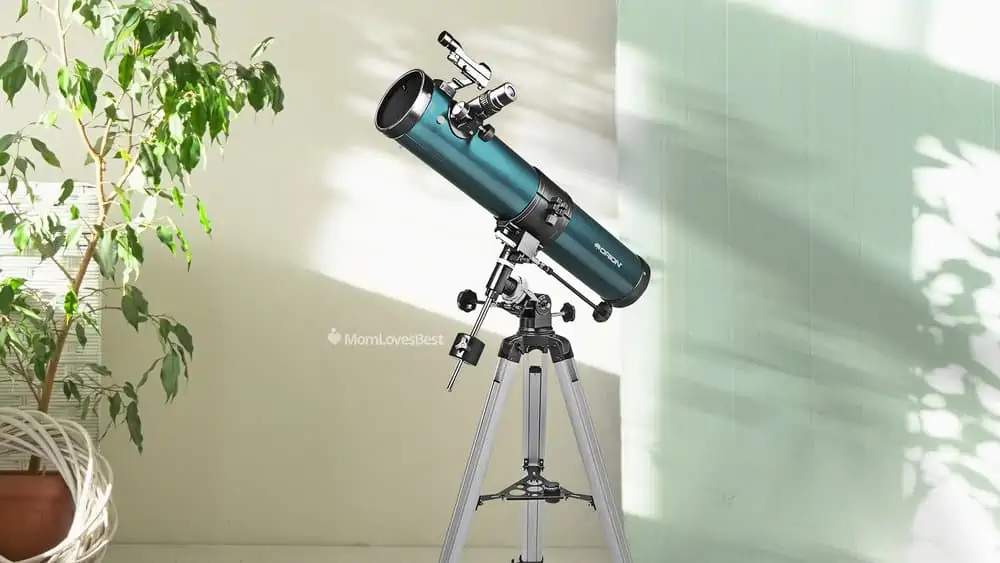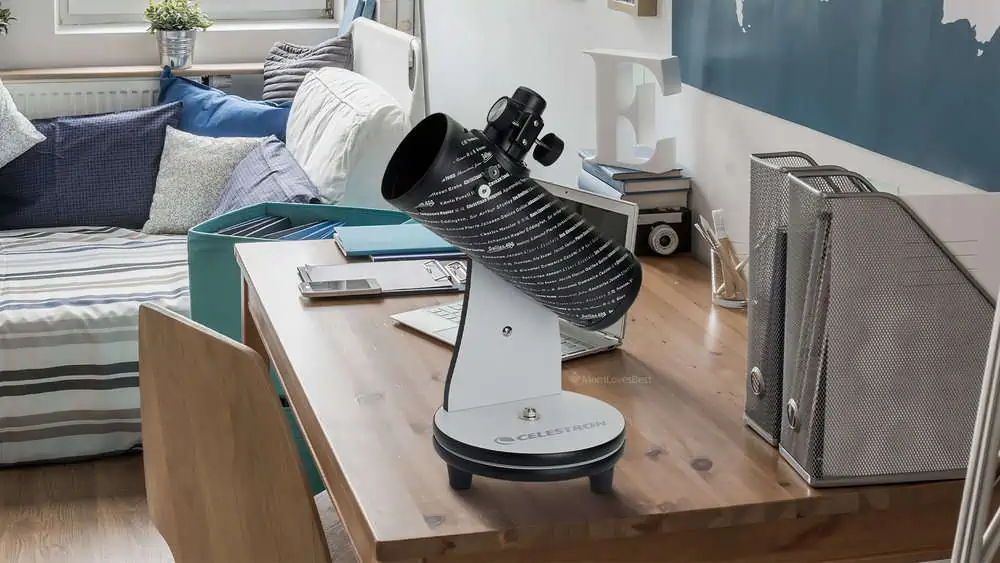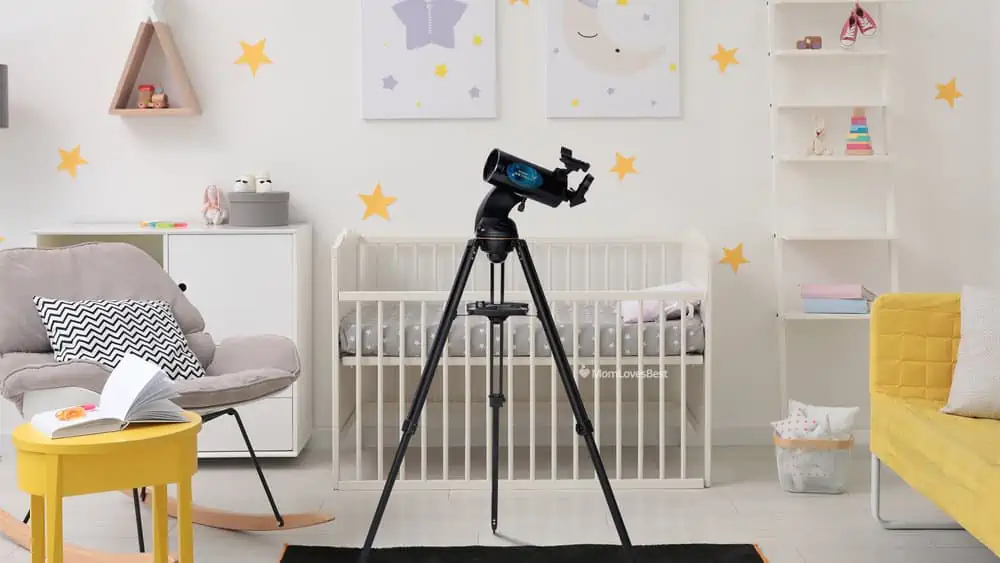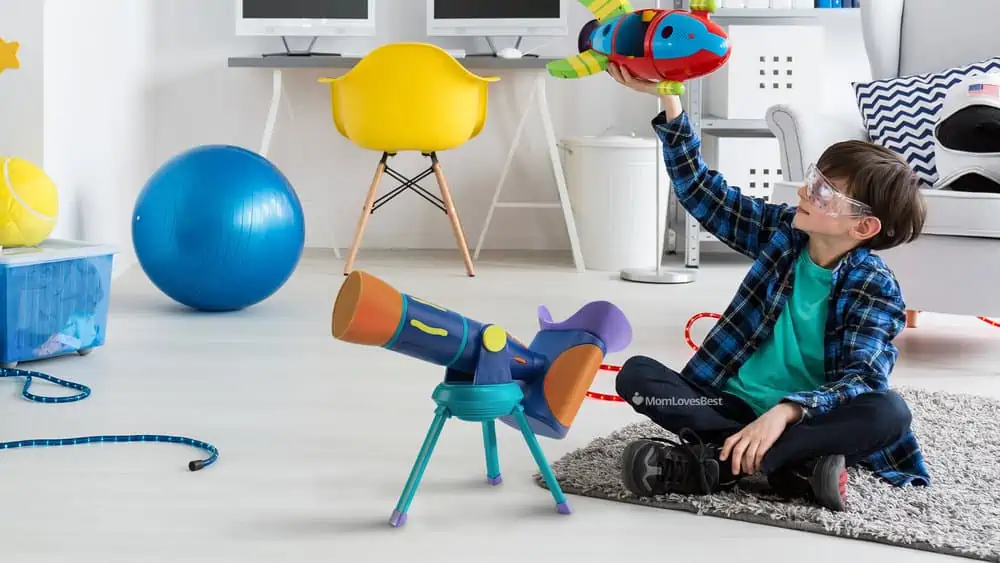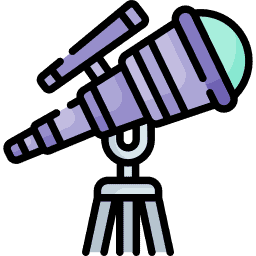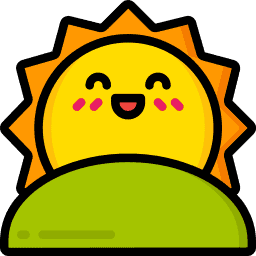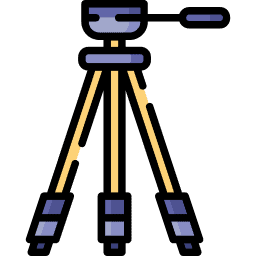Telescopes open up a universe of wonder right in your backyard. Whether your child wants to count the craters on the moon, spot Saturn’s rings, or just watch birds nesting in the distance, the right optical gear makes all the difference.
However, the market is flooded with “toy” telescopes that are little more than decorative plastic tubes. To save you from frustration, we have sifted through the options to find the best telescopes for kids that actually work.
- User-friendly
- East to set up
- Includes cool accessories
- Moon mirror included
- Easy-to-locate objects
- Flexible accessories
- Smartphone mount included
- Easy to transport
- Provides structure
- Portable and compact
- Great for the whole family
- Bright viewing
- Lightning fast set-up
- Compact
- Light and portable
- Flexible
- Journey through the stars
- Excellent for distance viewing
- Easy for younger children
- Child-friendly design
- Can be used any time
Key Takeaways
- Type Matters: Refractors are durable and great for beginners; reflectors offer better deep-space views but require more care.
- Aperture is King: The size of the lens or mirror (aperture) determines how bright and sharp the image will be; bigger is generally better.
- Stability is Crucial: A wobbly mount makes viewing impossible; look for a sturdy tripod or a tabletop base.
- Manage Expectations: Most beginner scopes excel at lunar viewing; seeing detailed planets requires higher apertures and darker skies.
Is It Worth Getting A Telescope for Kids?
Absolutely. If your child is asking questions about the stars or loves nature, a telescope is a fantastic investment. It fosters patience, scientific curiosity, and a connection to the natural world.
However, avoid the cheapest plastic options found in toy aisles. These often have poor optics that result in blurry, shaky images, which will only frustrate your child. It is better to spend a little more on a quality entry-level instrument or a high-quality pair of binoculars to start.
Types of Telescopes
You will generally encounter three main designs when shopping for young astronomers.
Refractor Telescopes
Refractors are what most people picture when they think of a telescope. They use a glass lens at the front of a long tube to gather light.
Because the tube is sealed, they are low maintenance and resistant to dust. They are rugged, easy to use, and provide right-side-up images, making them perfect for viewing both the moon and wildlife on Earth.
They are the best choice for younger children or families who want a “grab-and-go” instrument.
Reflector Telescopes
Reflectors use mirrors instead of lenses. A large mirror at the bottom of the tube bounces light to a smaller secondary mirror, which directs it to the eyepiece.
These offer the best “bang for your buck” regarding aperture size. You can see fainter deep-sky objects like nebulas and galaxies better than you can with a similarly priced refractor.
However, the open tube requires occasional cleaning, and the mirrors may need alignment (collimation). They also show images upside down, so they are not suitable for terrestrial viewing.
Compound Telescopes
Compound (or Catadioptric) telescopes combine lenses and mirrors. They offer high power in a short, compact tube.
These are excellent for portability and often come with computerized mounts. However, they are usually more expensive and can be complex to set up. They are best suited for older children or teenagers who are serious about the hobby.
What to Look For
Beyond the type, here are the critical specs to watch for.
Product Reviews
We tested optics, stability, and ease of assembly to find the top telescopes for young astronomers.
Celestron 80 mm Travel Scope Refractor Telescope
Best Kids’ Telescope for Travel
If your family loves camping or hiking, the Celestron 80mm Travel Scope is a brilliant companion. Unlike bulky traditional scopes, this unit is designed specifically to pack up and go. It features a respectable 80mm aperture, which pulls in significantly more light than the standard 70mm beginner scopes.
It works as a hybrid instrument. You can use it at night to view the rings of Saturn or the Orion Nebula, and use it during the day to spot wildlife across a valley. The included backpack fits the scope, tripod, and all accessories, making it easy for a child to carry their own gear.
What We Like
Grab-and-Go Design
The custom backpack is a game-changer. It keeps all the small parts organized and makes the telescope feel like an adventure kit rather than a fragile scientific instrument.
Brighter Views
The 80mm lens is a step up from the common 50mm or 70mm toy scopes. That extra size means brighter images of the moon’s craters and better visibility of deep-sky objects like star clusters.
Smartphone Adapter
It comes with a basic smartphone adapter. This lets your child capture photos of the moon to share with friends or use for school projects, bridging the gap between a visual hobby and digital sharing.
What We Don't Like
Tripod Stability
To keep it lightweight for travel, the tripod is not the heavy-duty variety. It can be a bit shaky in wind or at high magnification. For backyard use, keeping the legs retracted (using it on a table) often helps stability.
Product Specs
| Type | Refractor |
| Aperture | 80 mm |
| Includes | Two eyepieces, tripod, smartphone mount, backpack, software |
| Age Range | 5 years and older |
Our Ratings
Celestron 31036 AstroMaster LT 76AZ Telescope
Best Beginner Telescope for Kids
The Celestron AstroMaster LT 76AZ is a reflector telescope mounted on a simple Alt-Azimuth mount. This setup is ideal for beginners because it eliminates the complex alignment required by equatorial mounts. You simply point the tube up, down, left, or right.
With a 76mm aperture, it gathers enough light to reveal impressive lunar details and the major planets. The “panhandle” control on the mount is intuitive for kids, allowing them to track objects smoothly as they drift across the sky.
What We Like
No-Tool Setup
Parents will appreciate that this assembles quickly without a toolbox. You can go from box to backyard observing in minutes, which is vital when a child’s excitement is peaking.
Smooth Control
The panhandle clutch allows for smooth movements. Kids can easily aim the telescope without the jerky motions common in cheaper mounts, reducing frustration when trying to keep the moon in view.
Permanent StarPointer
The finder scope (StarPointer) is built-in. It projects a red dot on a glass window, making it incredibly easy to aim the telescope at a target before looking through the eyepiece.
What We Don't Like
Reflector Orientation
Since it uses mirrors, the image in the eyepiece will be upside down or rotated. This is normal for astronomical telescopes and doesn’t matter for space, but it makes this scope unsuitable for watching birds or spying on neighbors.
Product Specs
| Type | Reflector |
| Aperture | 76 mm |
| Includes | Tripod, astronomy software |
| Age Range | 5 years and older |
Our Ratings
Emarth Refractor Telescope
Best Refractor Telescope for Kids
The Emarth 70mm is a classic refractor that balances price and performance. It serves as an excellent entry point for younger children who want to try astronomy without a massive financial commitment.
Because it is a sealed refractor, it is robust and ready for terrestrial viewing right out of the box. The optics provide correct-image viewing, so your child can use it to watch eagles during the day and the moon at night. It includes two eyepieces (25mm and 10mm) to switch between wide views and close-ups.
What We Like
Beginner Friendly
The learning curve here is non-existent. It functions intuitively, much like a camera or spyglass. This encourages kids to use it independently without needing constant parental adjustment.
Dual Purpose
Because the image is right-side up, it gets double the use. If it’s cloudy at night, it still works as a powerful spotting scope for nature observation during the day.
Affordable Entry
It provides legitimate 70mm optics at a price point often reserved for toy scopes. It is a low-risk way to test if your child’s interest in space is a passing phase or a lifelong passion.
What We Don't Like
Basic Accessories
The included tripod is lightweight and short, designed mostly for tabletop use or for very small children. You might eventually want to mount the telescope on a sturdier photo tripod if you have one.
Product Specs
| Type | Refractor |
| Aperture | 70 mm |
| Includes | Tripod, two eyepieces, case, finderscope. |
| Age Range | 5 years and older |
Our Ratings
MaxUSee Kids Telescope
Best Budget Telescope for Kids
The MaxUSee is strictly for the youngest explorers (ages 5 to 7). It is a small refractor designed to be a step up from a toy, but it does not compete with the larger instruments on this list.
It includes a moon map and a built-in compass, which adds an educational layer to the experience. While it won’t show the rings of Saturn clearly, it is perfectly capable of showing craters on the moon, which is usually the most exciting target for a 5-year-old anyway.
What We Like
Moon Mirror
The “moon mirror” is a simplified filter designed to reduce the glare of a bright full moon. This makes viewing comfortable for sensitive young eyes.
Educational Extras
The inclusion of star and moon maps helps parents turn a viewing session into a lesson. You can help your child identify “Maria” (seas) on the moon using the map.
Ultra Portable
It is tiny and practically weightless. A small child can easily carry this outside themselves, giving them a sense of ownership and independence.
What We Don't Like
Very Limited Optics
With a small aperture and plastic components, this is essentially a “moon-only” telescope. Don’t expect to see deep space objects or detailed planets. It is a starter toy, not a scientific instrument.
Product Specs
| Type | Refractor |
| Aperture | 40 mm |
| Includes | Two eyepieces, tripod, finderscope, built-in compass, star map, moon map |
| Age Range | 3 years and older |
Our Ratings
Celestron Inspire 80AZ
Best Kids’ Telescope For Astrophotography
The Celestron Inspire 80AZ brings a modern twist to the classic refractor. It is designed for the Instagram generation. The lens cap actually features a built-in smartphone adapter, allowing you to easily clamp your phone to the eyepiece for photography.
Beyond the gadgets, it is a solid 80mm refractor. The mount is asymmetrical and stylish, but also functional, offering better stability than standard entry-level tripods. It also includes a red LED flashlight integrated into the mount, which is handy for reading star charts in the dark.
What We Like
Clever Phone Mount
Using the lens cap as a phone mount is genius. It holds the phone steady over the eyepiece, solving the hardest part of smartphone astrophotography: alignment. Your kid can snap a pic of the moon in seconds.
Focus Micrometer
The focuser has a numbered scale (a micrometer). If you have perfect focus for your eyes at “number 5,” you can easily return to that setting later without hunting back and forth.
Red LED Light
The built-in red flashlight preserves your night vision. It’s a thoughtful touch that saves you from having to buy a separate astronomer’s flashlight.
What We Don't Like
Chromatic Aberration
Like most refractors in this price range, you might see a slight purple halo around very bright objects (like Jupiter). It’s normal for this optical design and doesn’t ruin the view, but it is noticeable.
Product Specs
| Type | Refractor |
| Aperture | 80 mm, but a 70 mm version is also available |
| Includes | Two eyepieces, tripod, finderscope, red LED flashlight, and an integrated smartphone adapter |
| Age Range | 5 years and older |
Our Ratings
Orion SpaceProbe II 76mm Equatorial Reflector Telescope
Best Kid’s Telescope With Equatorial Mount
The Orion SpaceProbe II distinguishes itself with an Equatorial (EQ) mount. Unlike standard mounts that move up and down, an EQ mount is aligned with the Earth’s axis. This allows you to track a star or planet by turning a single knob.
While it has a steeper learning curve, it is the best option for budding scientists who want to learn how the sky actually moves. The 76mm reflector tube provides sharp views of the moon and can resolve the moons of Jupiter.
What We Like
Slow-Motion Controls
The mount features slow-motion cables. You can twist these knobs to make tiny, precise adjustments to keep an object in view. This is much easier than trying to push the telescope tube by hand.
Learning Astronomy
Using an EQ mount teaches your child about celestial coordinates and the rotation of the Earth. It turns the telescope into a true educational tool rather than just a “point and look” device.
Good Accessories
Orion includes two quality Kellner eyepieces (25mm and 10mm) rather than the cheaper Huygens eyepieces found in many kid’s kits. This results in clearer, wider views.
What We Don't Like
Complex Setup
The EQ mount requires assembly and alignment with the North Star to work correctly. It might be frustrating for a child under 10 to set up alone; parental help is definitely required.
Product Specs
| Type | Equatorial Reflector |
| Aperture | 25mm and 10mm |
| Includes | Two eyepieces, MoonMap 260, red dot finder scope, adjustable tripod |
| Age Range | Not specified — we recommend about 8 and up |
Our Ratings
NASA Lunar Telescope for Kids
Best Kids’ Telescope For Viewing The Moon
This NASA-branded telescope is a tabletop reflector designed specifically for lunar observation. It is small, lightweight, and extremely simple.
Because it is a tabletop design, you don’t have to worry about extending tripod legs or wobbling. You simply place it on a patio table, point it at the moon, and look. It serves as a great educational toy, bridging the gap between a classroom lesson and a real hobby.
What We Like
Stable Base
Tabletop mounts are inherently more stable than cheap, spindly tripods. This stability makes it much easier for a child to focus on the image.
Educational Guide
The included learning guide is colorful and engaging. It walks kids through the phases of the moon and what to look for, adding context to what they are seeing in the eyepiece.
Compact Size
It takes up almost no space. It looks cool sitting on a bedroom shelf when not in use, serving as space-themed decor that is actually functional.
What We Don't Like
Limited Aperture
While it is great for the bright moon, the small aperture struggles with planets and stars. It is best viewed as a specialized “moon scope” rather than a general-purpose astronomical instrument.
Product Specs
| Type | Reflector |
| Aperture | 60 mm |
| Includes | One tabletop tripod, one low-power eyepiece, one high-power eyepiece, one lens dust cap, a learning guide with instructions |
| Age Range | 3 years and older |
Our Ratings
Celestron 21024 FirstScope Telescope
Best Kids’ Tabletop Telescope
The Celestron FirstScope is a high-quality Dobsonian reflector in a miniature package. It is widely considered one of the best value-for-money telescopes on the market.
The “Dobsonian” style mount swivels smoothly on a tabletop turntable. It is incredibly intuitive; your child simply grabs the tube and points it. Despite its small size, it has a 76mm aperture that provides surprisingly wide, bright fields of view. It is perfect for scanning the Milky Way or looking at the Pleiades star cluster.
What We Like
Insanely Easy to Use
There are no knobs to tighten, no polar alignment, and no tripod legs to extend. You just set it down and observe. This removes all barriers to entry for a young child.
Wide Field of View
Because of its short focal length, it shows a large patch of the sky. This makes it much easier for kids to find objects than with long, narrow telescopes.
Bang for Your Buck
You are paying for the mirror and the tube, not a fancy mount or electronics. This means you get better optical quality per dollar than almost any other kid’s scope.
What We Don't Like
Table Required
You need a steady table, bench, or hood of a car to place it on. Viewing from the ground is uncomfortable unless you are lying down.
Product Specs
| Type | Reflector |
| Aperture | 76 mm |
| Includes | One 20 mm eyepiece, One 40mm eyepiece, stand, dust cap for lens, a free copy of Starry Night software (download) |
| Age Range | 4 years and older |
Our Ratings
Celestron AstroFi 102 Wi-Fi Wireless Telescope
Best Computer Controlled Kids’ Telescope
The Celestron AstroFi 102 is a Maksutov-Cassegrain telescope that creates its own Wi-Fi network. You don’t use a hand controller; instead, you use your smartphone or tablet to control the telescope.
Using the free SkyPortal app, you align the telescope with three bright stars (the app helps you). Once aligned, you can tap any object on your screen, Jupiter, Mars, a galaxy, and the telescope will automatically motor over to it. It is fantastic for tech-savvy kids who want to see cool stuff without spending hours hunting for it.
What We Like
“GoTo” Technology
The automated finding ability is incredible. It opens up thousands of objects that a beginner would never find on their own. It effectively gives your child a guided tour of the universe.
High-Quality Optics
The Maksutov design packs a long focal length into a short tube. This provides high magnification capability, making it excellent for seeing details on planets, like the bands of Jupiter.
Interactive App
The app provides audio descriptions and facts about what you are viewing. It’s like having an astronomer standing next to you explaining the sights.
What We Don't Like
Power Dependent
It requires power (batteries or a power tank) to move. You cannot move it manually by hand without losing the alignment. If the batteries die, the viewing session is over.
Product Specs
| Type | Reflecting |
| Aperture | 102 mm |
| Includes | Star Pointer finder scope, two Kellner eyepieces, mirror star diagonal, tripod |
| Age Range | 5 years and older |
Our Ratings
Educational Insights GeoSafari Jr. Talking Telescope
Best Toy Telescope for Kids
For toddlers and preschoolers (ages 3-5), a real telescope can be physically difficult to use. The GeoSafari Jr. solves this by being a high-tech view-master rather than an optical instrument.
It uses slides containing beautiful images from NASA. The child looks through the dual eyepiece (no need to close one eye!) and listens to facts narrated by Emily Dawn Calandrelli from “Xploration Outer Space.” It introduces the concepts of space without the frustration of focusing or waiting for a clear night sky.
What We Like
Binocular Viewing
Young children struggle to wink or close one eye. The soft, rubberized dual eyepiece lets them look with both eyes, making the experience natural and comfortable.
Weather Proof Fun
Since it uses internal slides, it works on rainy days, sunny afternoons, or before bed. You don’t have to wait for the stars to align to learn about space.
Interactive Quiz Mode
The talking feature includes a quiz mode that tests what the child has learned. It turns passive viewing into an active game, reinforcing the space facts.
What We Don't Like
Not a Real Telescope
To be clear: this does not magnify the real sky. It is an image viewer. If you point it at the moon, you won’t see anything through it. It is strictly a learning toy.
Product Specs
| Type | Not an actual telescope |
| Aperture | n/a |
| Includes | 24 slides |
| Age Range | 4 years and older |
Our Ratings
| Product | Best | Type | Aperture | Age Range |
| Celestron Travel Scope Telescope | Travel | Refractor | 80 mm | 5 years & older |
| Celestron 31036 AstroMaster LT 76AZ | Beginner | Reflector | 76 mm | 5 years & older |
| Emarth Refractor Telescope | Refractor | Refractor | 70 mm | 5 years & older |
| MaxUSee Kids Telescope | Budget | Refractor | 40 mm | 3 years & older |
| Celestron Inspire 80AZ | Astrophotography | Refractor | 80 mm | 5 years & older |
| Orion SpaceProbe II | With Equatorial Mount | Equatorial Reflector | 25mm and 10mm | 8 years & older |
| NASA Lunar Telescope | Viewing The Moon | Reflector | 60 mm | 3 years & older |
| Celestron 21024 FirstScope Telescope | Tabletop | Reflector | 76 mm | 4 years & older |
| Celestron AstroFi 102 Wireless Telescope | Computer Controlled | Reflecting | 102 mm | 5 years & older |
| Educational Insights GeoSafari Jr. | Toy Telescope | Toy | N/A | 4 years & older |
FAQs
Buying a telescope can feel like learning a new language. Here are the answers to the most common questions parents ask.
A First Step
A telescope is more than just a gadget; it is a ticket to the universe. Whether you choose a simple tabletop reflector or a travel-ready refractor, the goal is to get your child looking up.
Start with the moon, it’s easy to find and always impressive. From there, who knows? You might just be launching the career of the next great astronaut.
